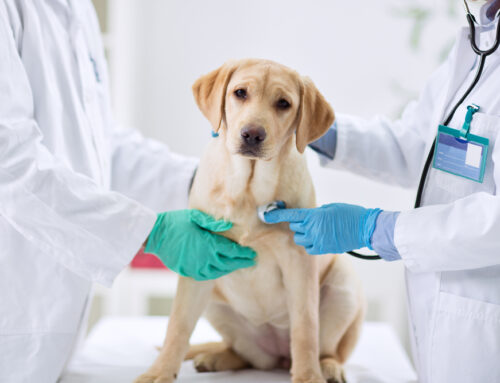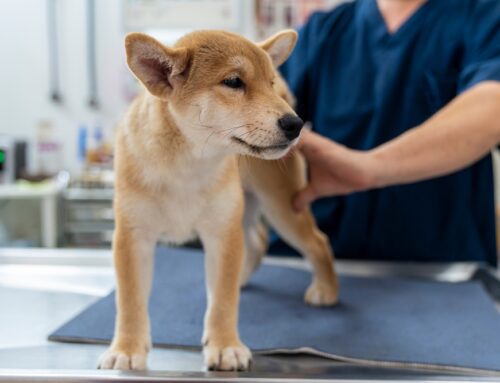A torn ACL—more accurately called a cranial cruciate ligament (CCL) tear in dogs—is one of the most common and frustrating orthopedic injuries we see at Mission Veterinary Clinic in Granada Hills, CA. Whether your pup is suddenly limping after a game of fetch or has been gradually favoring one leg, a torn CCL can quickly impact your dog’s comfort, mobility, and quality of life.
We know how overwhelming it can be to face the question of surgery vs. conservative care. This guide is designed to walk you through what a torn CCL actually means, how it’s diagnosed, and the treatment paths available—from physical therapy to advanced surgical options.
Schedule an exam at Mission Veterinary Clinic if you think your dog may have suffered a cruciate injury.
What Exactly Is the Cranial Cruciate Ligament (CCL)?
The CCL is a key stabilizing ligament in your dog’s knee joint. It helps prevent the femur from sliding forward over the tibia and keeps the knee steady during movement. When this ligament tears, the joint becomes unstable, inflamed, and painful. This condition can happen suddenly with a twist or jump—or slowly, as the ligament degenerates over time.
Learn more about the structure and function of the CCL from Colorado State University’s orthopedic guide.
What Causes a CCL Tear?
In our experience, the most common reasons include:
- Sudden injury: Slipping on a floor, leaping off the couch, or an intense play session.
- Chronic wear and tear: Especially in older dogs or those with poor conditioning.
- Excess weight: Obesity places added strain on joints and ligaments.
If your dog is suddenly limping, check out Why is My Dog Limping? from the AKC for more context.
Recognizing the Symptoms of a Torn CCL
Your dog might be experiencing a CCL injury if you notice:
- Limping or holding up a hind leg
- Difficulty standing, walking, or jumping
- Knee swelling
- A “toe-touching” stance at rest
In a partial tear, symptoms may be subtle at first—occasional limping or stiffness. A complete tear is more obvious and often results in continuous lameness and muscle loss.
Left untreated, CCL injuries can lead to arthritis or even rupture in the opposite knee due to overcompensation.
Diagnosis: How Is a CCL Tear Confirmed?
When you visit Mission Veterinary Clinic, we’ll perform a full physical exam and assess your dog’s range of motion. We may perform a “drawer test” to feel for instability in the joint.
Additional diagnostics might include:
- X-rays: To rule out fractures and look for joint changes. See examples at UC Davis Veterinary Radiology.
- MRI or ultrasound: These advanced imaging tools can better visualize soft tissues. Here’s a guide to small animal MRI.
Treatment Paths: Surgical vs. Conservative Care
Conservative (Non-Surgical) Management
For small or senior dogs with lower activity levels, conservative treatment can be a good option:
- Strict rest and activity restriction
- Weight loss
- Joint supplements like glucosamine and omega-3s
- Rehabilitation therapy: Hydrotherapy, stretching, and laser therapy (RehabVets)
Want to know how to manage recovery at home? Read: How to Survive Crate Rest
Surgical Options
For most active or large-breed dogs, surgery offers the best long-term outcomes.
TPLO (Tibial Plateau Leveling Osteotomy)
- Reshapes the tibia to stabilize the knee without relying on the CCL
- Best for large, athletic dogs
- Learn more at TPLO Info
TTA (Tibial Tuberosity Advancement)
- Changes knee mechanics to eliminate need for the ligament
- Similar recovery time to TPLO
- Recovery comparison: TPLO vs. TTA – DVM360
Extracapsular Repair
- Uses synthetic suture outside the joint
- Ideal for small breeds
- Less invasive, shorter recovery
Whichever surgical option you choose, consistent aftercare is key. Explore TPLO Recovery Rehab Tips.

Rehabilitation and Recovery Support
Recovery after CCL surgery (or even non-surgical care) can take up to 16 weeks and should include:
- Gradual return to activity
- Hydrotherapy, laser therapy, and stretching
- Mental enrichment and puzzle toys to reduce boredom
Enrichment matters, especially during downtime. Check out DIY Enrichment Ideas and AKC’s Cognitive Dog Toy Tips.
Need help building an exercise routine? Download AAHA’s Mobility Matters Guide or learn about proper warm-ups and cooldowns for dogs.
Preventing Future Injuries
You can’t always prevent a torn CCL, but you can lower the risk:
- Maintain a healthy weight
- Avoid intense play on slippery surfaces
- Build muscle with low-impact exercise like swimming
- Use ramps instead of stairs when possible
And avoid dangerous chew toys that may cause injury or pain—see Preventive Vet’s guide to dangerous chews
Facing a torn CCL diagnosis is hard. But the good news is, your dog has options—and they can absolutely get back to a comfortable, active life with the right plan in place.
At Mission Veterinary Clinic in Granada Hills, we offer comprehensive orthopedic care, diagnostics, and recovery support tailored to your dog’s needs.










Leave A Comment